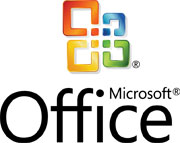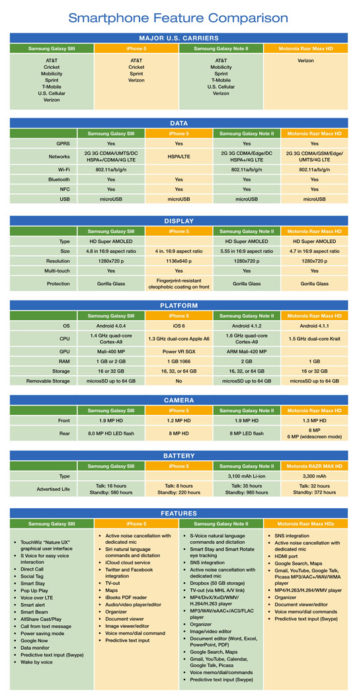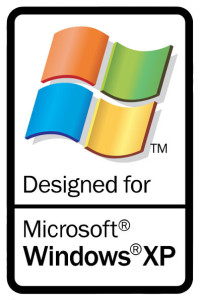Tech trends to watch out for in 2013
Takeaway: IT leaders need to be smart about the decisions they make and truly leverage next-generation tools and strategies. Here are some technology trends that will shape their decision-making in 2013.
 With the New Year comes a fresh set of technology imperatives, challenges and opportunities for organizations to consider. The increased innovation in the technology sector means that companies are finally in a position to be smart about the IT decisions they make and truly leverage next-generation tools and strategies to mitigate risk and shape strategies for the future. Below are trends that will shape and impact their decision-making in 2013.
With the New Year comes a fresh set of technology imperatives, challenges and opportunities for organizations to consider. The increased innovation in the technology sector means that companies are finally in a position to be smart about the IT decisions they make and truly leverage next-generation tools and strategies to mitigate risk and shape strategies for the future. Below are trends that will shape and impact their decision-making in 2013.
Prediction #1: Cloud interoperability will take the spotlight
Cloud interoperability will be huge: private cloud adoption will continue to grow, but more organizations and MSPs will adopt a hybrid public / private approach. This hybrid approach could simply be an organization’s private cloud interfacing with other public clouds in a secure manner, or it could mean augmenting an internal private cloud with additional compute, storage or cooling resources from a public cloud. The biggest challenge with this reality will be the manageability of the hybrid environment. Generally, enterprises and MSPs don’t use the same set of tools and monitor environments in the same way. To ensure these hybrid cloud environments deliver on their promise of costs savings and productivity benefits, vendor-agnostic management and monitoring solutions are critical.
Prediction #2: Worldwide economic struggles will direct the data center world
Data centers are consuming more power, more cooling and their density continues to rise, but an organization ability to retrofit or expand the physical space is challenging and not cost effective. Private and hybrid cloud models will get traction because it saves on cost. It isn’t cost intuitive to upgrade a physical data center, so the shift to private clouds is the next logical step.
Worldwide economic struggles both in the financial sector, and more importantly in the energy sector, have the high probability of forcing data centers to close or increase prices to stay functional. While there has been a data center construction boom in the last several years, the demand for space will have to be countered by ever-rising costs in the energy industry. Depending on how the world can come together and address the energy crisis, this will continue to dramatically impact the data center world.
Prediction #3: BYOD and v Virtualization will collide
Smartphone, tablet, laptop and other mobile devices will all begin leveraging virtualization technologies, increasing virtualized BYOD, and this will become the next evolution of the mobile device. Consumers will be confident in the security and interoperability of a working profile with their personal profile on any device they choose, regardless of their location, and they will no longer need access to their specific mobile device. With virtualization, they can grab a friend’s and have access to their virtual identity no matter where they are. Service providers have already started leveraging this technology, and enterprises are not far behind, as they will benefit once they’ve addressed potential security and identity challenges and embraced the evolution.
Prediction # 4: Cloud outages by major Web hosts will gain momentum
We will continue to see cloud outages by all major cloud providers. These outages will dramatically impact businesses and hosting customers on the cloud. Technology today is mature enough to prevent complete outage of customer assets. The big balance has always been with hosting how much money you are willing to spend to ensure uptime. More and more cloud and hosting customers are putting the trust in the clouds resilience without really understanding or choosing to understand that without paying for resilience you will experience some outage at some point. As the cloud provider drive for pricing down to compete with each other and gain market share the cost of driving price down has to be found in some level of corners being cut. Which will lead to more outages. Example: It comes down to mitigating cost vs. risk. Amazon keeps trying to drive costs down, but the tradeoff is their customers must decide how much they want to pay to mitigate their own risk. In order to lower risk, a company suffers the effect on its monthly price. However, with today’s economy and the focus on cost rather than risk, outages will still occur.
Prediction # 5: The Presidential imperative will be cybersecurity
 President Obama has been elected for a second term and one thing is crystal clear: cybersecurity must be a top priority for him in 2013. There is an increased awareness around the issue of cybersecurity, and it is only set to rise further as more and more people transition information to the cloud. In 2013, the president will have to answer: how do I protect people on the Internet? We’ve had multiple bills passed but what we really need is education around how to be safe as a nation on the Internet and in the cloud. A cyber war is as dangerous as a physical one and with out a government focus on cybersecurity, we’re facing that risk head on.
President Obama has been elected for a second term and one thing is crystal clear: cybersecurity must be a top priority for him in 2013. There is an increased awareness around the issue of cybersecurity, and it is only set to rise further as more and more people transition information to the cloud. In 2013, the president will have to answer: how do I protect people on the Internet? We’ve had multiple bills passed but what we really need is education around how to be safe as a nation on the Internet and in the cloud. A cyber war is as dangerous as a physical one and with out a government focus on cybersecurity, we’re facing that risk head on.
Looking Ahead
When you take a step back and look at all 2013 technology predictions from industry one thing becomes clear: there are lots of moving parts for organizations to control. It will be critical next year that they have tools to manage and monitor these ever-changing environments. Organizations must be smarter about IT, proactive rather than reactive and continue to innovate.








